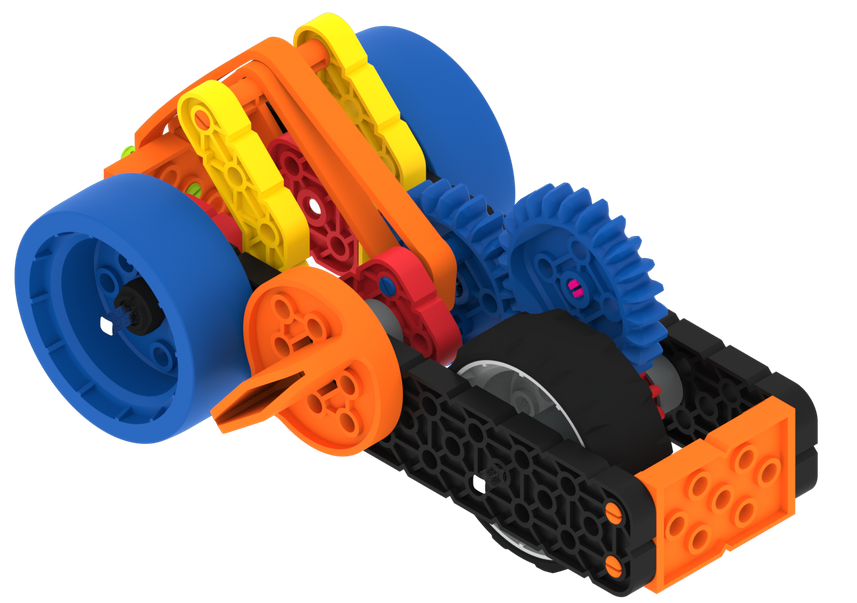Engage
Launch the Engage Section
ACTS is what the teacher will do and ASKS is how the teacher will facilitate.
| ACTS | ASKS |
|---|---|
If time allows, repeat the process using a third level of force, to enable students’ to have further observation of the energy transfer. |
|
Getting the Students Ready to Build
We will now use the Super Car to explore how different variables, such as how many times the rubber band is turned with the Orange Knob, affect the Super Car’s movement!
Facilitate the Build
-
InstructInstruct
students to join their groups, and have them complete the Robotics Roles & Routines sheet. Use the Suggested Role Responsibilities slide in the Lab Image Slideshow as a guide for students to complete this sheet. Students should build the Super Car if they have not done so already.

Super Car Build - DistributeDistribute five variable materials per group for students to use. These materials should affect the movement of the Super Car in some way. They can include carpet pieces, tiles, tape, different rubber bands, sandpaper, or ramps. Also distribute one timer per group to measure the time it takes the Super Car to travel a distance.
-
FacilitateFacilitate
as students investigate the materials and ensure that there is equal distribution (5 each) between groups.
- Explain that the materials are to be used in designing an experiment to make their Super Cars travel different distances.
- They will change 3 variables, and run 2 trials for each, measuring and charting the distances traveled by the car as well as the time it took the car to travel that distance.
- OfferOffer suggestions and note positive team building and problem solving strategies when they have the materials at the tables.

Teacher Troubleshooting
- If students seem unsure of how to begin, you can use guiding questions to help them focus like:
- What do you think this material would do if the Super Car drove on it?
- We pulled the hair tie harder to make it fly further, can you think of a way to pull harder on the rubber band?
- Have multiple rolls of tape, rubber bands, or other materials available for students to be able to affix their variables to their driving surfaces, so that the pieces aren’t moving once they begin testing the Super Car.
Facilitation Strategies
- If teams are having trouble coming to a decision together, offer one of these collaborative decision making strategies:
- Voting: take a simple poll, and the majority wins. If there is a tie, the teacher can be a tie breaker
- Turn taking: test both ideas, but in two separate experiments. Try to combine the ideas in the third.
- Random decision making: flip a coin, or pull an idea out of a hat, and work with whatever comes up.
- Use the Get Ready...Get VEX...GO! PDF Book and Teacher’s Guide - If students are new to VEX GO, read the PDF book and use the prompts in the Teacher’s Guide (Google / .pptx / .pdf) to facilitate an introduction to building and using VEX GO before beginning the Lab activities. Students can join their groups and gather their VEX GO Kits, and follow along with the building activity within the book as you read.
- Use the Teacher’s Guide to facilitate student engagement. To focus on VEX GO connections in a more concrete or tangible way, use the Share, Show, or Find prompts on each page to give students an opportunity to get to know their kits in more depth.
- To focus on the habits of mind that support building and learning with VEX GO, like persistence, patience, and teamwork, use the Think prompts on each page to engage students in conversations about mindset and strategies to support successful group work and creative thinking.
- To learn more about using the PDF book and accompanying Teacher’s Guide as a teaching tool any time you are using VEX GO in your classroom, see this VEX Library article.